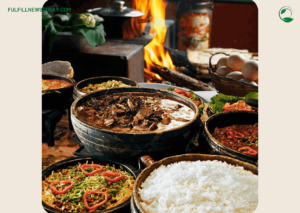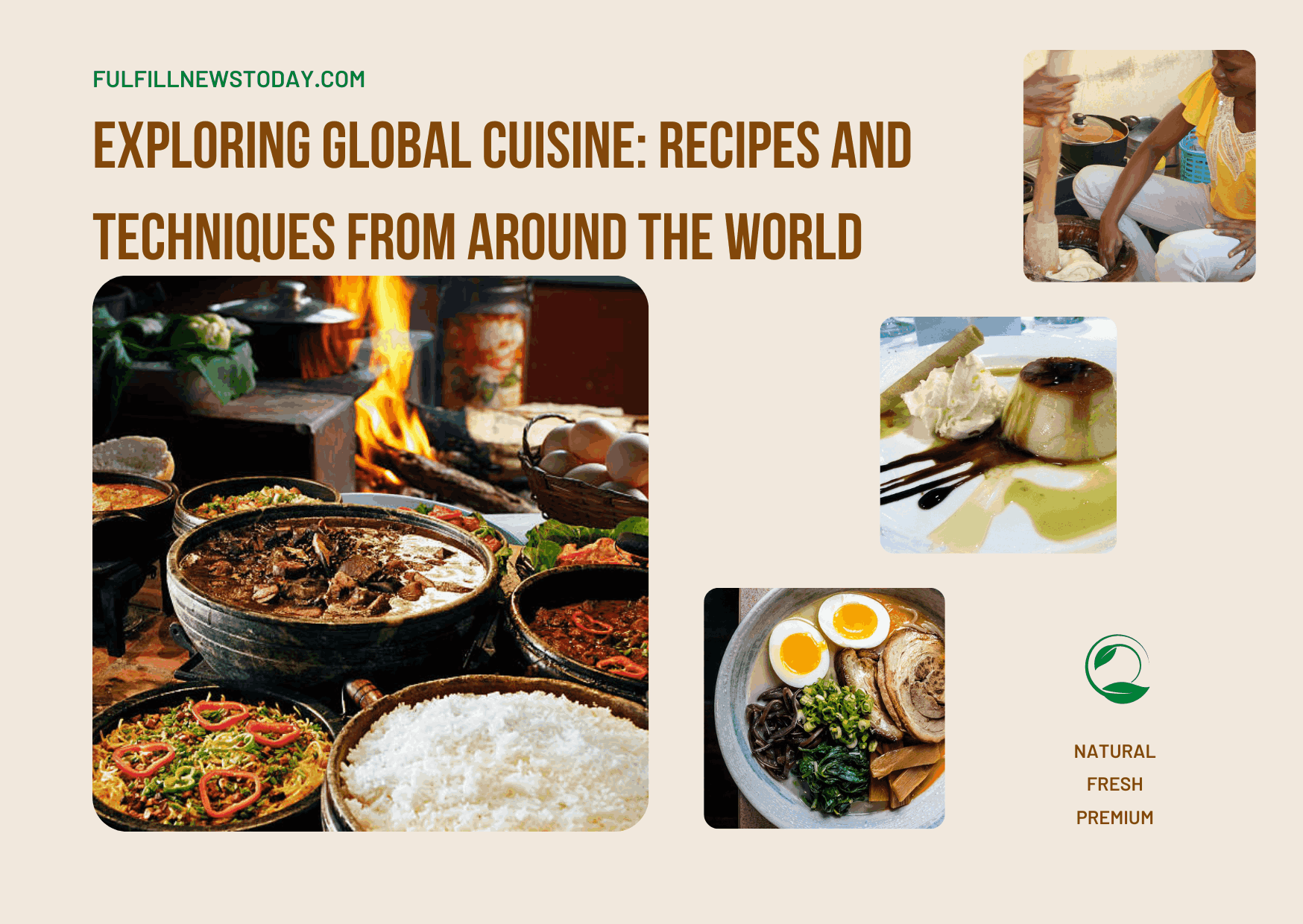“Discovering diverse flavors: A culinary journey through global cuisine” & Global cuisine offers a rich and diverse range of flavors and cooking techniques from around the world. Each country has its unique culinary traditions that have been passed down from generation to generation. For instance, Indian cuisine is known for its use of aromatic spices, such as turmeric, cumin, and coriander, which give dishes a distinct flavor and aroma.
Chinese cuisine is characterized by its use of stir-frying, where ingredients are quickly cooked over high heat in a wok to preserve their texture and flavor. Mexican cuisine is famous for its use of chilies and other bold flavors, which can be found in dishes like tacos and guacamole.
French cuisine is renowned for its classic sauces, like hollandaise and béarnaise, and techniques like sautéing and roasting. Japanese cuisine, on the other hand, emphasizes the use of fresh and seasonal ingredients, which are often presented in an aesthetically pleasing way.

Sushi, tempura, and ramen are some of the most well-known dishes from Japan. Whether you are a professional chef or a home cook, exploring global cuisine is a great way to expand your culinary skills and taste buds.
European Cuisine :
European cuisine refers to the diverse culinary traditions found across the continent of Europe. Due to its long history and varied geography, European cuisine has been influenced by various cultures and ingredients, resulting in a rich and diverse culinary landscape.
Some of the most well-known European cuisines include French, Italian, Spanish, and Greek, which are characterized by their use of fresh ingredients, flavorful herbs and spices, and a focus on regional specialties.
Other cuisines such as German, Austrian, and Scandinavian rely heavily on meat, potatoes, and other hearty ingredients, while Eastern European cuisines like Hungarian, Polish, and Russian feature dishes that are often rich, filling, and heavily seasoned.
Regardless of the specific cuisine, European food is often prepared with care and attention to detail, and many dishes have become famous around the world for their delicious and unique flavors. From French pastries to Italian pasta dishes, European cuisine is an important part of the world’s culinary heritage and continues to be celebrated and enjoyed by people all over the globe.
Asian Cuisine :
Asian cuisine refers to the diverse and rich culinary traditions originating from the Asian continent, including East Asia, Southeast Asia, South Asia, and West Asia. The cuisine varies greatly by region, reflecting the unique cultures, histories, and traditions of each area.
Rice, noodles, and vegetables are staples in many Asian dishes, but meat and seafood are also commonly used ingredients. Spices, herbs, and sauces also play a significant role in the flavor profile of Asian cuisine.
The cuisine is known for its balance of flavors, with dishes often incorporating sweet, sour, salty, and spicy elements. Popular Asian dishes include sushi, stir-fries, curries, dim sum, pho, and bibimbap.
As Asian cuisine has become more popular worldwide, fusion cuisine has emerged, blending traditional Asian dishes with Western ingredients and cooking techniques. Overall, Asian cuisine offers a vast array of flavors and dishes to explore and enjoy.
African Cuisine :
African cuisine is a diverse and vibrant culinary tradition that reflects the continent’s cultural and geographical diversity.
It encompasses a wide variety of ingredients, flavors, and cooking techniques, which vary from region to region. In general, African cuisine tends to be characterized by its use of bold and aromatic spices, fresh vegetables, grains, and legumes, and lean meats such as chicken, beef, and fish.

One of the most prominent features of African cuisine is the wide variety of starchy staples that form the basis of many meals. These include cassava, yams, maize, plantains, and rice, which are often served alongside flavorful stews or sauces made with meat, fish, or vegetables.
In West Africa, for example, dishes like jollof rice and fufu are popular staples, while in North Africa, couscous is a common grain-based dish. In East Africa, dishes like injera, a spongy sourdough flatbread, and ugali, a cornmeal porridge, are popular staples.
African cuisine also has a rich street food tradition, which often includes grilled meat, roasted nuts, and fried snacks like samosas or puffs. Many of these foods have become popular worldwide, with dishes like peri-peri chicken and bobotie gaining widespread recognition.
Overall, African cuisine is a delicious and dynamic culinary tradition that reflects the continent’s rich history and cultural heritage. With its bold flavors and diverse range of ingredients, it offers a truly unique and unforgettable dining experience.
South American cuisine :
South American cuisine is a fusion of indigenous and European influences that have developed over centuries of migration, trade, and cultural exchange. The cuisine is known for its bold flavors, use of fresh ingredients, and vibrant colors.
Some of the most popular dishes in South America include ceviche, a marinated seafood dish, empanadas, a savory pastry filled with meat or vegetables, and asado, a traditional barbecue-style meal that typically includes various cuts of beef, pork, and chicken.
Other regional specialties include feijoada, a hearty stew made with black beans and meat, and parrilla, a mixed grill of meats and sausages. South American cuisine is also known for its use of exotic ingredients like quinoa, yucca, and aji peppers.
Overall, South American cuisine is a rich and diverse culinary tradition that reflects the history and culture of the region
Conclusion :
Exploring global cuisine is a fantastic way to expand your culinary knowledge and skills, while also discovering new flavors and ingredients from around the world. Whether you are a seasoned chef or a beginner in the kitchen, there is something for everyone to learn from the rich and diverse culinary traditions of different cultures.
From the complex spices and flavors of Indian cuisine to the delicate techniques of French cuisine, there is a vast array of recipes and techniques to explore. By trying out new recipes and experimenting with different ingredients and cooking methods, you can develop your unique style and palate, while also gaining a deeper appreciation for the cultural significance of food.

In addition to being delicious and satisfying, cooking and sharing meals with others is a wonderful way to connect with people from different backgrounds and cultures. By learning about the foods and traditions of other countries, we can broaden our understanding of the world and appreciate the diversity of the human experience.
So whether you are traveling abroad or simply exploring the culinary landscape in your kitchen, take the time to appreciate the richness and variety of global cuisine. You never know what new and exciting flavors and techniques you may discover!
Read more: “Mastering Your Money: Tips for Financial Success”
